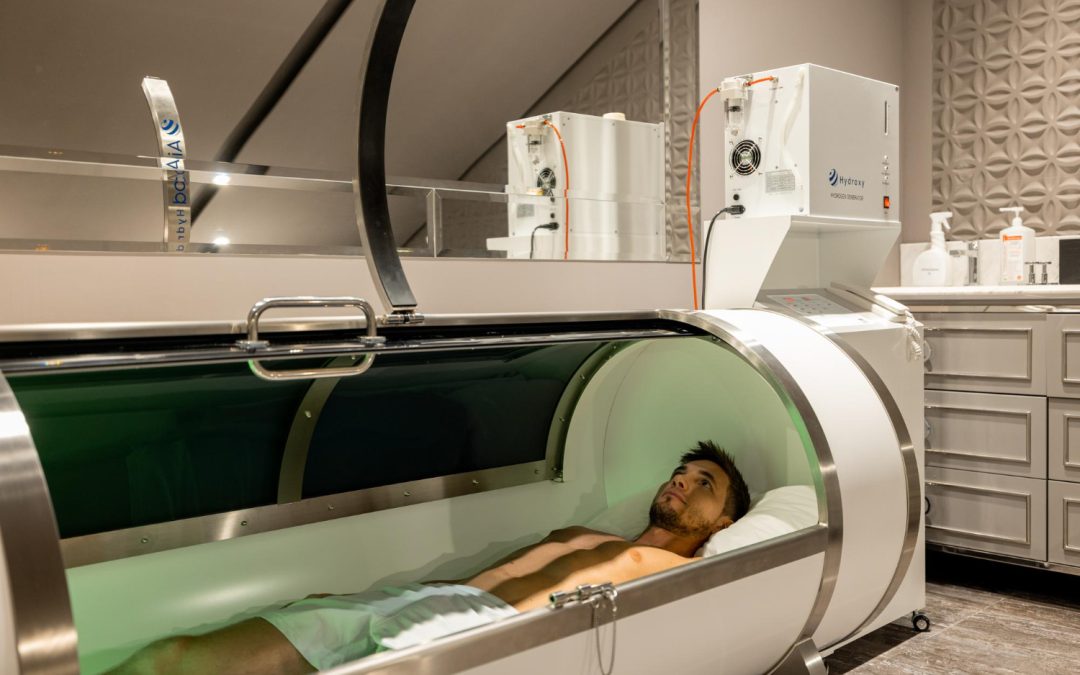Understanding hyperbaric chambers begins with knowing they are special environments where one can breathe pure oxygen under increased atmospheric pressure. This type of therapy, known as hyperbaric oxygen therapy (HBOT), is like a breath of fresh, yet intensified, air. It plays a role in healing various conditions, from stubborn wounds to issues divers might encounter. As you explore the topic, you’ll find that there are two main kinds of hyperbaric chambers: soft-shell and hard-shell. Each type offers its set of features and benefits, which could make the decision between them a bit of a head-scratcher.
With both soft-shell and hard-shell hyperbaric chambers available, the choice isn’t always straightforward. Each has distinct characteristics suitable for different needs and situations. Our goal is to guide you through these options so you can make an informed choice based on your particular circumstances. Whether you’re aiming for more mobility or need a higher-capacity chamber, knowing your options will set you on the right path.
What Are Soft-Shell Hyperbaric Chambers?
Soft-shell hyperbaric chambers stand out due to their lightweight and portable nature. Typically, these chambers are made from flexible materials, resembling a robust fabric tent. They’re designed for easy setup and often come with a zipper entry. If moving your chamber frequently is a priority, soft-shell models are worth considering.
Let’s look at some benefits:
- Portability: These chambers are easily transportable, making them a good choice for those wanting flexibility or needing temporary setups.
- Affordability: Being generally less expensive than hard-shell options, they are an attractive option for budget-constrained situations.
- Ease of Use: With straightforward installation and operation, these chambers are friendly even to those new to HBOT.
On the downside, soft-shell chambers do have some limitations. They can’t reach the higher pressures that hard-shell chambers can. This means they might not be suitable for some medical conditions that require intense treatment settings. Plus, their fabric construction, while sturdy, doesn’t match the durability and longevity of a solid frame. When considering this option, think about your long-term needs and whether the lower pressure levels meet your requirements.
What Are Hard-Shell Hyperbaric Chambers?
Hard-shell hyperbaric chambers stand out mainly for their strong construction. Usually made from metal or sturdy plastic, these chambers offer a different set of features. Unlike their soft-shell counterparts, hard-shell chambers are built to endure higher levels of pressure. This makes them ideal for treatments that need those intense settings. If a more permanent setup is what you’re after, a hard-shell chamber might just fit the bill.
Let’s explore what makes these chambers appealing:
- Higher Pressure Capacity: Hard-shell chambers can handle greater pressure levels, which can be essential for more serious treatments.
- Durability: With robust materials like steel or acrylic, these chambers offer longevity that far exceeds softer models.
- Wider Range of Medical Uses: Given their ability to withstand higher pressures, they prove beneficial for a variety of medical needs.
However, there are some trade-offs:
- Higher Cost: The materials and technology backing these chambers make them a more expensive option.
- Less Portable: Once installed, moving them isn’t easy, and they often require a dedicated space.
- Professional Installation: Setting up a hard-shell chamber typically needs a trained professional, adding to the overall cost.
Comparing Soft-Shell and Hard-Shell Chambers
Thinking about the differences between soft-shell and hard-shell hyperbaric chambers adds another layer to your decision-making process. Let’s break down some important factors that differentiate the two.
1. Cost: Generally, soft-shell chambers are less costly upfront while hard-shell options demand a bigger investment due to their materials and capabilities.
2. Usage and Treatments: Soft-shell chambers are often best suited for conditions that demand mobility and ease, but hard-shell ones are preferred for more intense treatments that need higher pressure markings.
3. Maintenance Needs: Maintenance for soft-shell versions typically involves regular checks for wear and tear, while hard-shell models require ongoing care to ensure their mechanical and technological elements remain in top shape.
Which One Should You Choose?
Choosing the right hyperbaric chamber comes down to evaluating a mix of practical needs and personal preferences. Consider these key aspects when making your choice:
- Budget: Understand how much you’re ready to invest. Soft-shell chambers offer savings initially, while hard-shell models might offer more long-term durability.
- Medical Needs: Determine what kind of conditions or treatments are at play. Some may require higher pressure settings that only hard-shell chambers offer.
- Long-Term Plans: Think about how often and for how long you’ll be using the chamber, which can influence which option is more economical or sustainable.
- Space Availability: Make sure you have the appropriate space for installation, especially for hard-shell models that need more room.
Having identified these factors, it’s wise to consult with healthcare professionals. Their guidance can be invaluable in ensuring that the chamber you choose aligns perfectly with your requirements and circumstances.
Considering a hyperbaric chamber can be a significant decision. To explore more and find the right fit for your needs, delve into the options with Founding Fathers Hyperbarics. Whether you’re curious about the features of soft-shell models or the benefits of hard-shell alternatives, our hyper chambers offer the versatility to suit various requirements. Learn more about the therapy options available and start paving the path to enhanced health and wellness.

